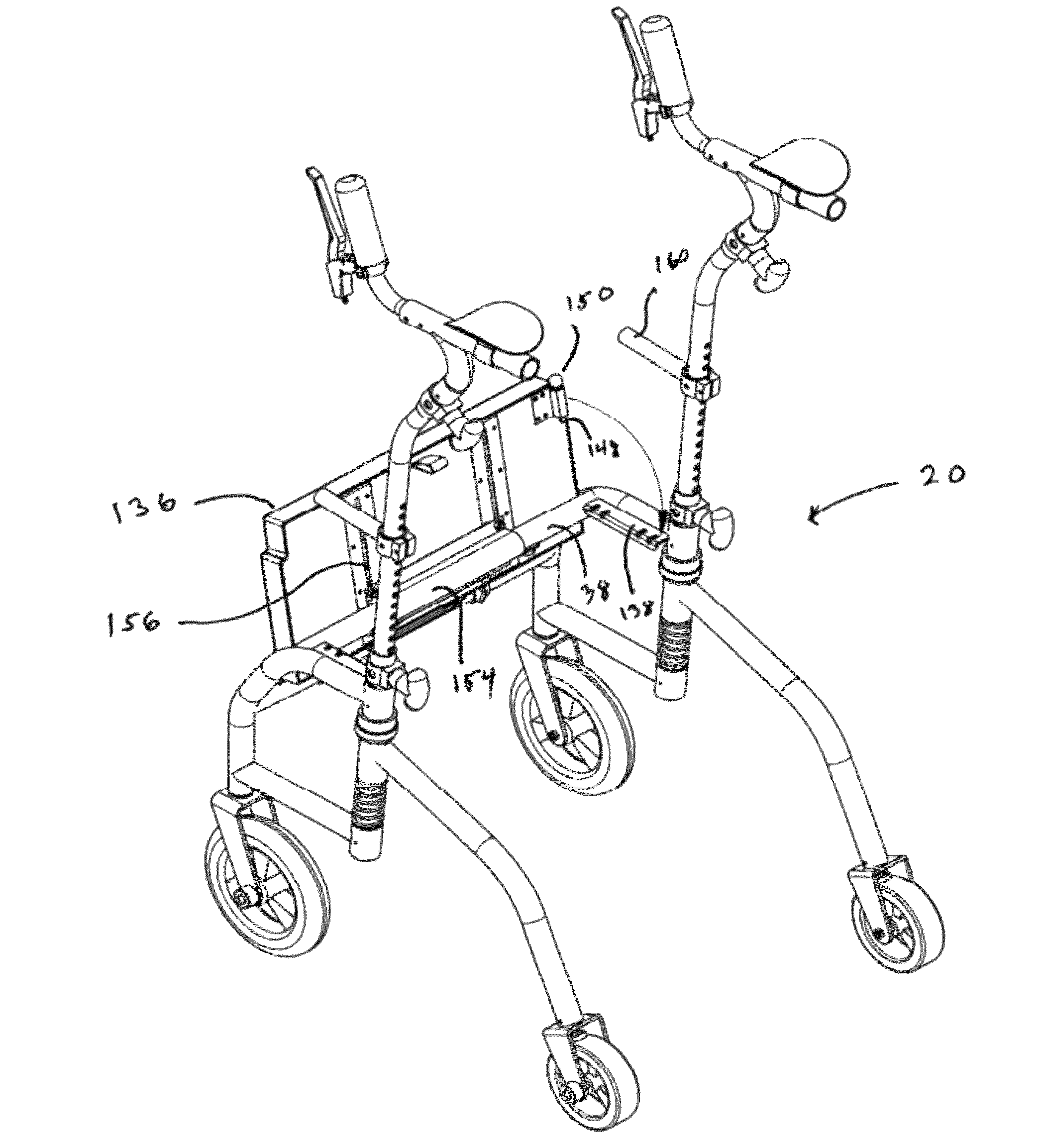Mobilizer for exercise, rehabilitation and wellness
a technology for rehabilitation and wellness, applied in the field of mobility devices for exercise, rehabilitation and wellness, can solve the problems of inability to adapt to the nature or severity of a user's disability, condition or injury, and the inability of prior art walkers, canes or crutches, to readily increase or decrease depending on the severity of the disability, and achieve the effect of facilitating movement and ameliorating various mobility impairing conditions
- Summary
- Abstract
- Description
- Claims
- Application Information
AI Technical Summary
Benefits of technology
Problems solved by technology
Method used
Image
Examples
Embodiment Construction
[0037]The following description is provided to enable any person skilled in the art to make and use the invention and sets forth the best modes contemplated by the inventor of carrying out this invention. Various modifications, however, will remain readily apparent to those skilled in the art, since the general principles of the present invention have been defined herein specifically to provide a mobilizer to aid in walking, rehabilitation and support of disabled persons.
[0038]FIG. 1 shows a preferred embodiment of the mobilizer in perspective view from the rear. FIG. 2 shows a side view of the device. The device 20 is constructed as a base frame 22 and substantially upright support members 24 which bear arm support assemblies 26 for supporting the user's weight through the user's arms. Although round tubular aluminum is the presently preferred structural material, the structural members / elements of the mobilizer can be constructed from other appropriate metals such as steel, titani...
PUM
 Login to View More
Login to View More Abstract
Description
Claims
Application Information
 Login to View More
Login to View More - R&D
- Intellectual Property
- Life Sciences
- Materials
- Tech Scout
- Unparalleled Data Quality
- Higher Quality Content
- 60% Fewer Hallucinations
Browse by: Latest US Patents, China's latest patents, Technical Efficacy Thesaurus, Application Domain, Technology Topic, Popular Technical Reports.
© 2025 PatSnap. All rights reserved.Legal|Privacy policy|Modern Slavery Act Transparency Statement|Sitemap|About US| Contact US: help@patsnap.com



